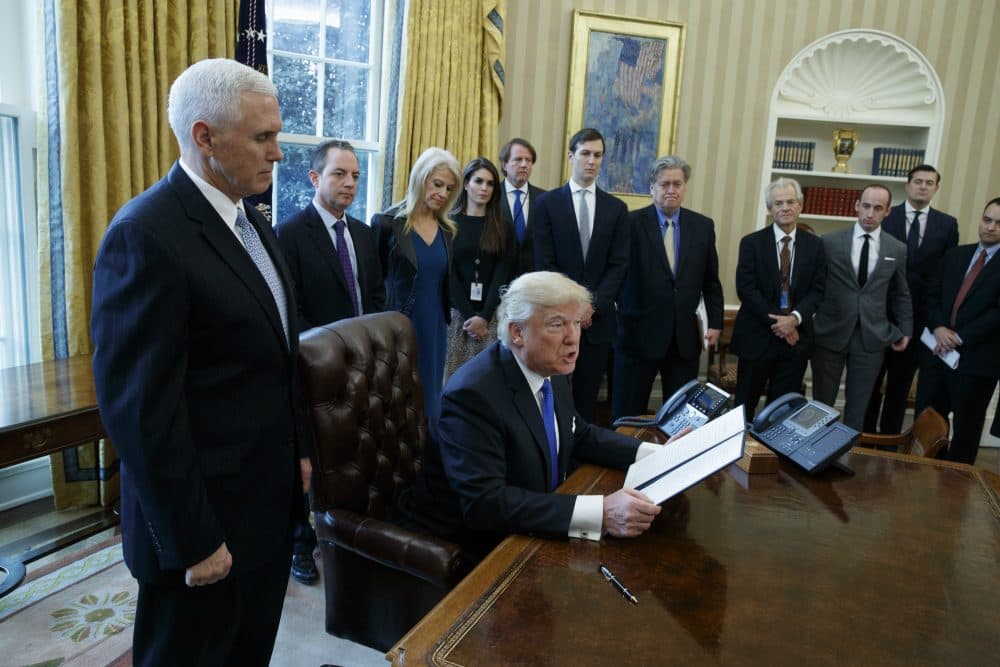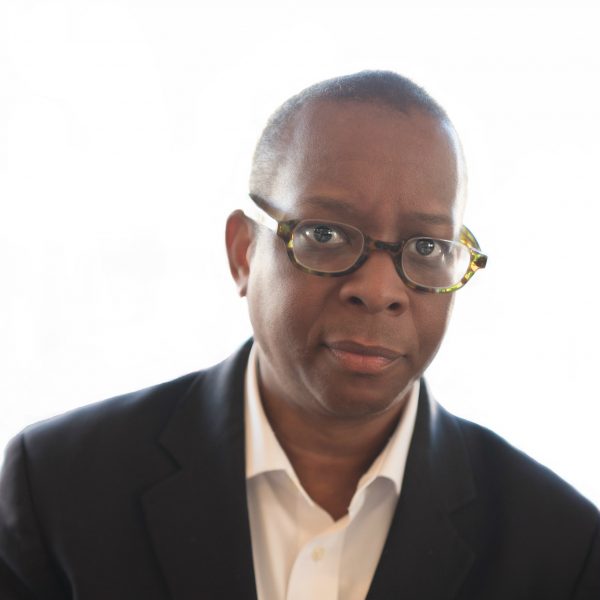Advertisement
A Plea For Diversity In The White House

COMMENTARY
The odious optics presented at President Trump’s first working session since his inauguration last Friday could not have been more stark along the lines of race: All of the senior staff standing around Trump as he signed multiple executive orders were white. What's more, the majority of senior staffers being sworn into office by Vice President Mike Pence at the White House Sunday night were also white and predominantly male.
The unsettling visuals of a coterie of white male policy swayers should concern us for what they may signify about the White House’s priorities on race and gender. They portend, perhaps, a return to a form of national governance not necessarily centered on diversity, but on skin pigmentation; not committed to multiculturalism but to a manifestation of racial myopia that privileges white decision-making.
The unsettling visuals of a coterie of white male policy swayers should concern us for what they may signify about the White House’s priorities on race and gender.
Diversity at the White House has been taken seriously since the election of President Jimmy Carter in 1976, when he appointed blacks to highly visible offices, including Ambassador Andrew Young at the United Nations. President Clinton, in 1992, promised to make his cabinet “look like” America. He appointed seven African-American cabinet secretaries; 44 percent of Clinton’s administration were women.
Clinton also nominated Madeleine Albright as the first female secretary of state, and Janet Reno as the first woman to serve as U.S. attorney general. President George W. Bush appointed Condoleezza Rice as the first African-American to hold the post of national policy advisor and secretary of state.
As the nation’s first African-American president, Barack Obama added to his predecessors' commitment to racial and gender inclusion, extending high level appointments to gays and lesbians in the military.
In contrast, Trump’s incoming White House team of policy staff and advisors will pale to that of his predecessors, literally. For many, it will represent a step backward from hard-earned racial and gender progress, sending the ostensible message that the White House has retuned to a privileged lair for white males.
Not that we should be surprised. During his campaign for president, Trump denigrated President Obama by questioning his citizenship. Trump also used blacks as racial boogeymen during the campaign by describing their neighborhoods as dystopian killing fields where getting shot is routine.
Congressman John Lewis boycotted Trump's inauguration because he believes the president’s election to be “illegitimate.” But in staying away, Lewis was also expressing his wariness of a Trump administration that has shown few signs of inclusiveness. So far, Lewis is right. And the president-elect's Twitter attack on Lewis over Martin Luther King Jr. weekend left many blacks convinced that Trump’s treatment of blacks has reached a level of total condescension.
At the very least, Trump has some explaining to do about the utter lack of diversity among his top policy advisors and aides. Why so white? Why so male?
When Trump says he wants "to make America great again," as he did throughout his campaign, the phrase resonates with many blacks as a code to return blacks to a place of second class citizenship. Ninety-three percent of blacks voted against Trump because he presents a clear threat to advancements gained by African-Americans since the civil rights movement.
At the very least, Trump has some explaining to do about the utter lack of diversity among his top policy advisors and aides. Why so white? Why so male?
If Trump doesn't diversify the higher echelons of his administration, he will hamstring his ability to engage the full complexity of the nation’s citizenry, in all our ethnic, racial, gender, physical ability and sexual orientation diversity.
